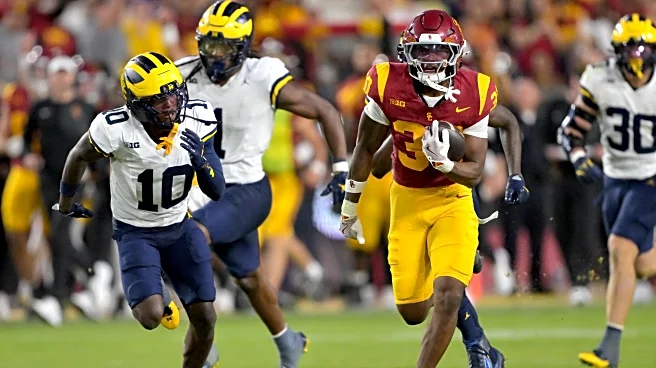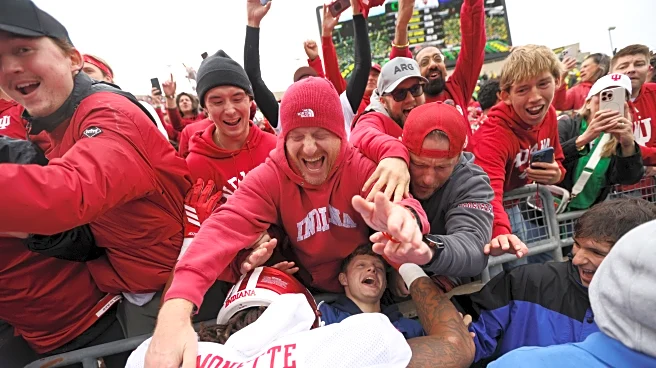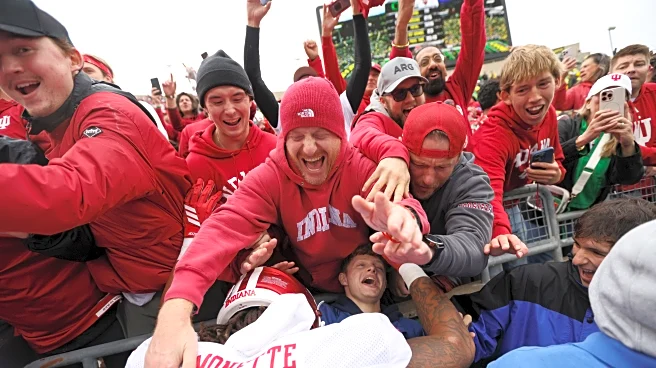What's Happening?
Texas Longhorns sophomore running back Jerrick Gibson has decided to leave the program and enter the NCAA transfer portal. Gibson, who arrived at Texas as a highly-touted four-star recruit, struggled to secure playing time this season. Despite showing
promise during his freshman year, Gibson faced increased competition from returning players and new recruits, which limited his opportunities on the field. His decision to transfer comes after not seeing playing time against major teams like Ohio State and Florida, and follows a season marked by challenges such as fumbles and competition for the running back position.
Why It's Important?
Gibson's departure is significant for the Texas Longhorns as it reflects the competitive nature of college football programs and the challenges athletes face in securing playing time. For Gibson, transferring offers a chance to find a program where he can better showcase his skills and potentially have a more prominent role. For Texas, losing a player of Gibson's caliber could impact their depth at the running back position and necessitate adjustments in their roster strategy. This move also highlights the broader trend of athletes using the transfer portal to seek better opportunities, which can affect team dynamics and recruitment strategies.
What's Next?
Gibson will enter the transfer portal during the winter window, seeking a new program where he can continue his college football career. Texas will need to assess their running back depth and consider potential recruits or transfers to fill the gap left by Gibson. The coaching staff may also need to address any underlying issues that contributed to Gibson's decision to leave, such as playing time distribution and player development. Other programs may express interest in Gibson, given his potential and previous performance, leading to a competitive recruitment process.
Beyond the Headlines
Gibson's transfer decision could have implications for the culture and management of college football teams, emphasizing the importance of player satisfaction and development. It may prompt discussions on how programs can better support athletes in their growth and address concerns related to playing time and competition. Additionally, this situation could influence how coaches manage their rosters and develop strategies to retain talent while balancing team needs and individual aspirations.















